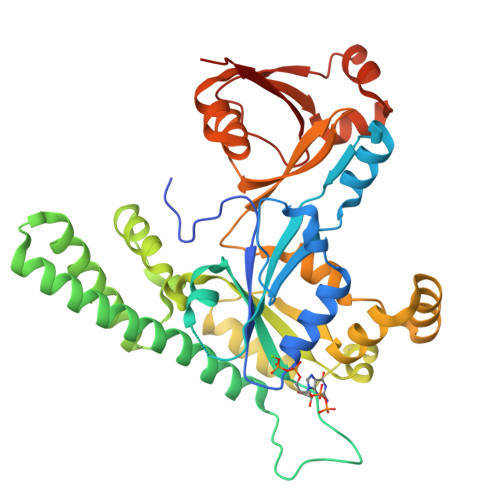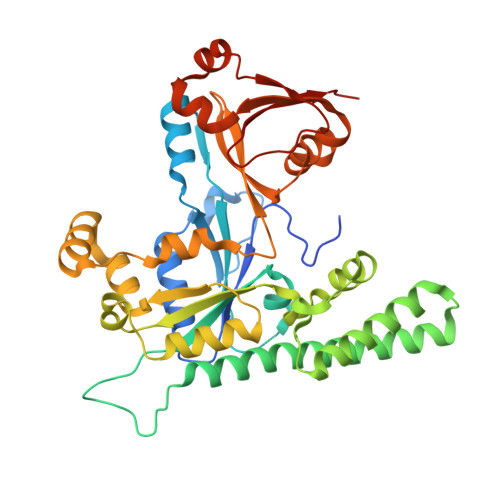Co-crystalization reveals the interaction between AtYchF1 and ppGpp.
Cheung, M.Y., Li, X., Ku, Y.S., Chen, Z., Lam, H.M.(2022) Front Mol Biosci 9: 1061350-1061350
- PubMed: 36533075
- DOI: https://doi.org/10.3389/fmolb.2022.1061350
- Primary Citation of Related Structures:
7Y9I - PubMed Abstract:
AtYchF1 is an unconventional G-protein in Arabidopsis thaliana that exhibits relaxed nucleotide-binding specificity. The bindings between AtYchF1 and biomolecules including GTP, ATP, and 26S rRNA have been reported. In this study, we demonstrated the binding of AtYchF1 to ppGpp in addition to the above molecules. AtYchF1 is a cytosolic protein previously reported as a negative regulator of both biotic and abiotic stresses while the accumulation of ppGpp in the cytoplasm induces retarded plant growth and development. By co-crystallization, in vitro pull-down experiments, and hydrolytic biochemical assays, we demonstrated the binding and hydrolysis of ppGpp by AtYchF1. ppGpp inhibits the binding of AtYchF1 to ATP, GTP, and 26S rRNA. The ppGpp hydrolyzing activity of AtYchF1 failed to be activated by AtGAP1. The AtYchF1-ppGpp co-crystal structure suggests that ppGpp might prevent His 136 from executing nucleotide hydrolysis. In addition, upon the binding of ppGpp, the conformation between the TGS and helical domains of AtYchF1 changes. Such structural changes probably influence the binding between AtYchF1 and other molecules such as 26S rRNA. Since YchF proteins are conserved among different kingdoms of life, the findings advance the knowledge on the role of AtYchF1 in regulating nucleotide signaling as well as hint at the possible involvement of YchF proteins in regulating ppGpp level in other species.
Organizational Affiliation:
Center for Soybean Research of the State Key Laboratory of Agrobiotechnology and School of Life Sciences, The Chinese University of Hong Kong, Shatin, Hong Kong SAR, China.


















